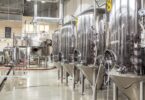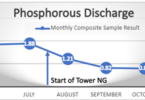Modernizing Sanitation Infrastructure

Aude Camus: senior product marketing manager at Bentley Systems
Controlling water and sewage utilities in 489 municipalities in Brazil, Aegea is committed to improving sanitation processes through advanced technology and digitization. Their goal is to facilitate network modernization to ensure access to clean water for over 30 million people. Aligned with these goals, they launched their intelligent infrastructure program, Infra Inteligente, to create a virtual environment, digitally mapping the structures that they operate. The program will help with preventing problems, reducing expenses, and ensuring operational efficiencies. Its objective is to identify and verify all physical assets of Aegea’s sanitation operation, providing an opportunity to deliver better services and improve the quality of the water in Guanabara Bay, supporting the environment, society, and sustainability. “The initiative focuses on comprehending and understanding the assets, the whole infrastructure, to determine which assets we need to deal with to be more efficient and increase the availability and quality of our services,” said Wagner Oliveira de Carvalho, engineer and senior project manager at Aegea.
As part of this smart digitization program, Aegea implemented Brazil’s largest asset inventory project in Rio de Janeiro, covering water and sewage treatment plants, pump stations, tanks, and other assets spread across 27 municipalities. With a focus on preventive maintenance and modernization of the sanitation infrastructure, Aegea invested BRL 10 million to create a true 3D digital map of Rio de Janeiro’s sanitation facilities, providing a real-time view of sanitation assets from any location. “These actions ensure security to concession contracts in the regulatory aspect, bringing greater availability of services to the population and assertiveness in operations, with a real-time view of the structures from anywhere in the world by Aegea’s team of experts,” said Carvalho. The digital roadmap streamlines decision-making and ensures that the population receives essential life services, including 24/7 access to clean water.
Facing Site, Survey, and Coordination Challenges on a Tight Timeline
Improving and modernizing old assets is a challenge that requires using technologies to capture the current condition and variability of the assets, replacing previously manual efforts. “Given the continental dimensions of our country, digital management and logistics are key issues for us,” said Carvalho. Aegea wanted to establish a virtual asset environment; however, they needed to capture and integrate assets scattered throughout the city, most of them buried. “In Rio de Janeiro, the initial estimated number of plants was 900 plants, but we found more than 1,300, of which 300 were found in low-income areas,” Carvalho said. With more than 29,000 physical assets at 1,317 industrial plants, the sheer size of the project involved coordinating 70 multidiscipline specialists amid a tight schedule to complete the 211,000 survey works and 3D modeling in Rio de Janeiro.
Adding to the project’s complexity was the topology of the city. Rio de Janeiro has a varying topography with mountains, hills, and rocks, resulting in difficulties when surveying the plants and assets. Also, with the water source at the low point and the communities located at the high point, Aegea needed to ensure that their pumps were operating, treating the water, and transporting the water through the thousands of kilometers of pipeline to the population. To optimize their asset operations, they realized that they had to capture and share data in real time through digital surveying and monitoring to create accurate digital twins of their sanitation infrastructure. “The search for solutions that minimize the time of detection and repair of leaks and that provide a strategic view of the operation is constant, including support for real-time decision-making,” said Carvalho. To timely establish their digital 3D map, Aegea required flexible, integrated modeling applications to accommodate multisourced data while facilitating collaboration and accessibility across multiple engineering disciplines and concessionaires.

Leveraging ContextCapture, Aegea processed 156,000 drone-captured photos in record time, generating 3D digital twins. Image courtesy of Aegea.
Leveraging Bentley Applications to Establish a 3D Digital Map
Leveraging ContextCapture and Bentley’s open modeling applications, Aegea processed drone-captured photos to generate a 3D reality mesh and digital map of their plants and assets. “In this project, a set of 10 drones were flown over more than 1,300 plants, giving rise to a total of 156,000 photos that were processed in ContextCapture. We then generated a 3D digital model for each of the plants and providing a publication of each mesh in .3MX format in [the] Infra Inteligente portal,” said Carvalho. From the mesh model, Aegea created digital twins that accurately represent the structures, available in a web-based platform, providing a digital application for operations to control and monitor equipment and plants for logistical and operational planning. “We used several Bentley [applications] to build the models and then import them into a unity platform to build the digital twins,” said Waldo Bitencort, engineering specialist and project manager at Aegea.
“The advanced reality capture methodology of this enormous project has been fully tuned to achieve maximum accuracy and reliability for both graphical and nongraphical data, within a millimeter precision level,” said Bitencort. In the field, multidiscipline specialists with advanced equipment for georeferencing, identification, and verification of physical assets worked to tag each plant, asset, and equipment down to the level of a pump in a motor. Using ContextCapture, Aegea integrated the captured historical and real-time asset data to build the 3D asset map and digital twins, providing digital insight into asset reliability and operational performance.
Digital Twins Optimize Service Availability, Reliability, and Sustainability
Working in an integrated digital environment, Aegea completed Brazil’s largest asset inventory in Rio de Janeiro in record time, identifying nearly 30,000 assets and approximately 11 million asset attributes, and processing four terabytes of reality capture data with high precision geolocation. The result was a 3D map that represents over 1,000 sanitation facilities. The 3D map is interactive and continually updated based on the interoperability of Bentley applications with third-party systems, streamlining data flows while ensuring that all asset data is always current, up to date, and accessible for smart infrastructure management. “[With this, we] will be able carry out virtual visits to the concessionaire structures throughout the country, facilitating decision-making, and, consequently, ensuring the population receives the company’s essential services,” said Carvalho.
Through the application of Infra Inteligente and the creation of digital twins in a virtual reality environment, Aegea has real-time asset and plant insight to monitor equipment health and operation, preventing damage to equipment and piping, enabling digital lifecycle management of sanitation assets. The 3D smart solution optimizes performance, service availability, and reliability, mitigating risks and achieving operational efficiencies for sustainable clean water supply to Brazil’s communities. “Aegea constantly invests to improve its services, and technology is a fundamental part of this process,” said Fernando Humphreys, engineering director of Aegea. “Infra Inteligente provides a range of benefits to the population and reinforces our commitment to offering a service focused on the continuous improvement of the operation, respecting the characteristics and the sustainable cycle of each region.”
Project Summary
Organization: Aegea
Solution: Survey and Monitoring
Location: Rio de Janeiro, Brazil
Project Objectives:
- To create a virtual reality environment for lifecycle asset management of Aegea’s water and sewage system.
- To provide reliable, sustainable access to clean water for Rio de Janeiro and 13 states, covering 26 million people.
Project Playbook: ContextCapture, iTwin, LumenRT, MicroStation, OpenBuildings, OpenCities, ProjectWise
Fast Facts
- As part of their smart infrastructure program, Aegea implemented their largest digital asset project in Rio de Janeiro.
- The project required digitally mapping and integrating more than 29,0000 physical assets and over 1,300 industrial plants.
- Aegea used ContextCapture and Bentley’s open applications to enable 70 multidiscipline specialists to capture and model the sanitation structures.
ROI
- Leveraging ContextCapture, Aegea processed 156,000 drone-captured photos in record time, generating 3D digital twins.
- Aegea was able to identify nearly 30,000 assets and approximately 11 million asset attributes.
- With Bentley applications, the team processed four terabytes of reality capture data with high-precision geolocation.
Author: Aude Camus is a senior product marketing manager at Bentley Systems. She can be reached at aude.camus@bentley.com.







